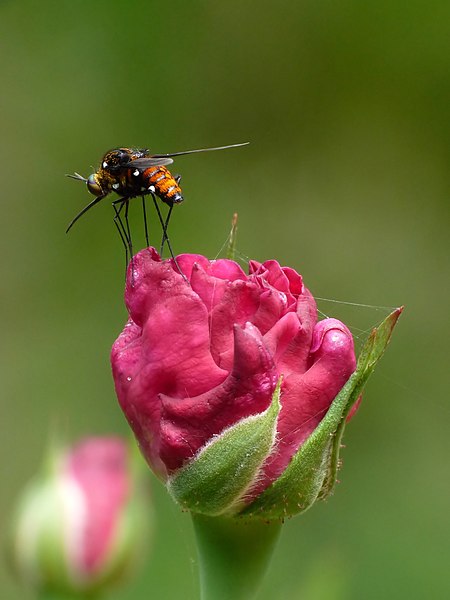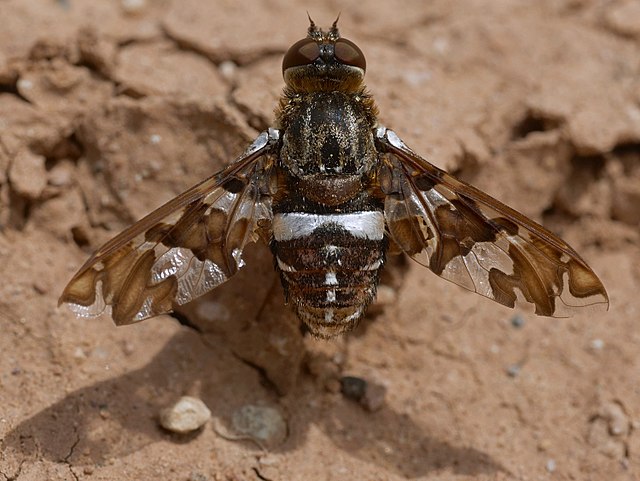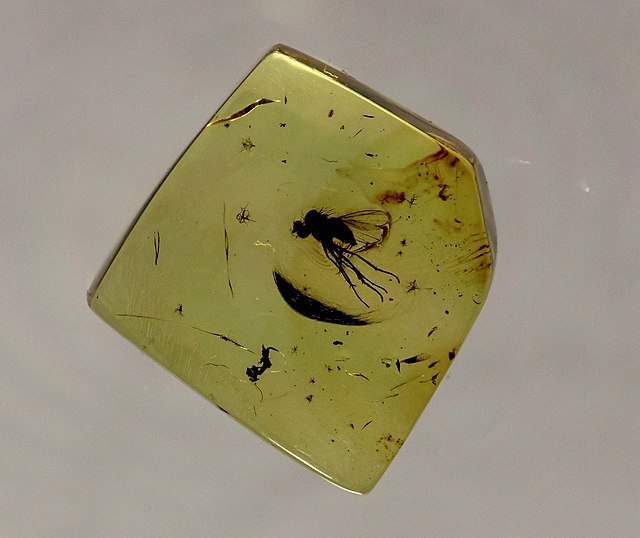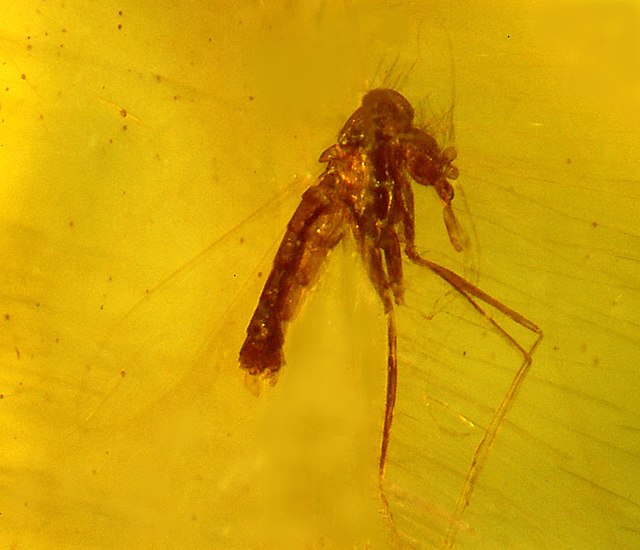The Bombyliidae are a family of flies, commonly known as bee flies. Adults generally feed on nectar and pollen, some being important pollinators. Larvae are mostly parasitoids of other insects.
Bombyliidae
Euchariomyia dives, a Bombyliidae in India: Note the bright bands of coloured hair, the long and thin legs and upright posture, the "delta wings", the proboscis, and the forward-pointing antennae.
Exoprosopa caliptera in Great Sand Dunes National Park, Colorado, US - note the silvery mirror stripes formed by patches of specialized hairs modified into reflecting scales
A male of Hyperalonia morio patrolling a patch of vegetation near the visitor center of Quebrada de las Higueritas in Lujan, San Luis, Argentina
Flies are insects of the order Diptera, the name being derived from the Greek δι- di- "two", and πτερόν pteron "wing". Insects of this order use only a single pair of wings to fly, the hindwings having evolved into advanced mechanosensory organs known as halteres, which act as high-speed sensors of rotational movement and allow dipterans to perform advanced aerobatics. Diptera is a large order containing an estimated 1,000,000 species including horse-flies, crane flies, hoverflies, mosquitoes and others, although only about 125,000 species have been described.
Fly
An Anthomyiidae species showing characteristic dipteran features: large eyes, small antennae, sucking mouthparts, single pair of flying wings, hindwings reduced to clublike halteres
Fossil brachyceran in Baltic amber. Lower Eocene, c. 50 million years ago
Fossil nematoceran in Dominican amber. Sandfly, Lutzomyia adiketis (Psychodidae), Early Miocene, c. 20 million years ago








